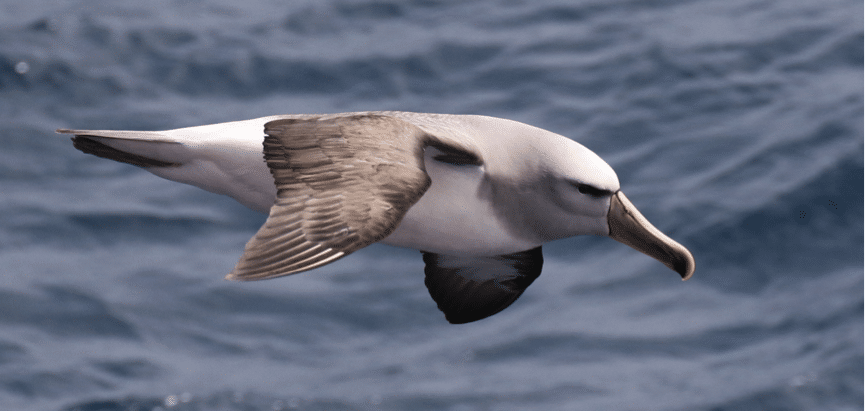 By Peter Ryan, onboard scientist, expert in general ornithology, seabird-fishery interactions, evolutionary ecology, marine debris, solid waste management, biology of oceanic islands.
By Peter Ryan, onboard scientist, expert in general ornithology, seabird-fishery interactions, evolutionary ecology, marine debris, solid waste management, biology of oceanic islands.
Leg 1, Day 10 – December, 2016.
We awoke to smooth seas and a gentle following wind; excitement was high for landfall on the western Crozets and the prospect of a flight to count Wandering Albatrosses and penguins on Ile aux Cochons for the first time since 1981. Cochons is home to the largest Wandering Albatross population in the Crozets (1263 pairs in 1981), so it was especially important to determine what had happened to the population over the last 35 years. But before arriving we had some great birding during five hours of steaming transects, which also saw several Hump-backed Whales and a Fin Whale. But the highlight was seeing at 1-2 adult Salvin’s Albatrosses – a New Zealand species reported to have 4 pairs on Iles des Pingouins in 1986. With 28 species (including 8 albatrosses), this was the highest day total to date.
| Salvin’s Prion | 100s | Diving petrel spp. | 34 |
| Macaroni Penguin | 25 | Wilson’s Storm Petrel | 15 |
| Black-bellied Storm Petrel | 15 | Grey-backed Storm Petrel | 11 |
| White-chinned Petrel | 10 | King Penguin | 9 |
| Black-browed Albatross | 6 | Indian Yellow-nosed Alby | 6 |
| Northern Giant Petrel | 6 | Brown Skua | 5 |
| Wandering Albatross | 4 | Grey-headed Albatross | 3 |
| Soft-plumaged Petrel | 3 | Blue Petrel | 3 |
| Sthn Rockhopper Penguin | 2 | Salvin’s Albatross | 2 |
| Sooty Albatross | 2 | Southern Royal Albatross | 2 |
| Light-mantled Albatross | 1 | Southern Giant Petrel | 1 |
| Cape (Pintado) Petrel | 1 | Kerguelen Petrel | 1 |
| Antarctic Prion | 1 | Gentoo Penguin | + |
| Kelp Gull | + | Crozet Shag | + |
Once again no litter was observed; kelps were regular.
